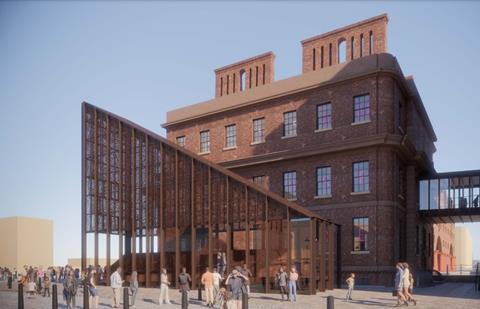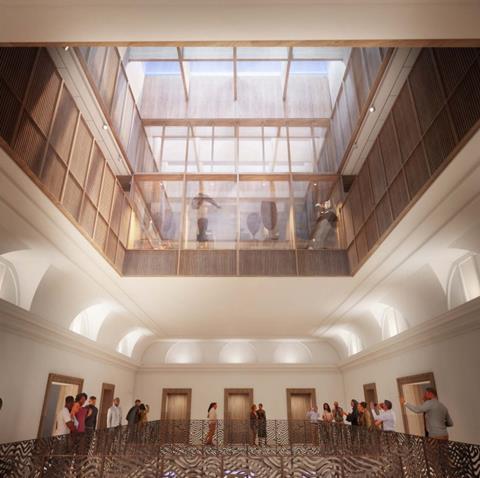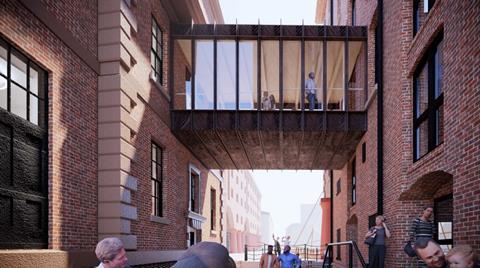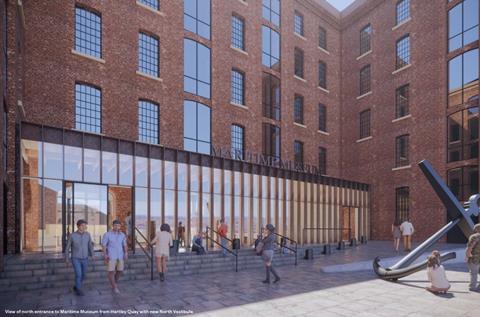Practice submits plans six months after replacing Adjaye Associates on project

Feilden Clegg Bradley Studios has unveiled its plans for a £57m redevelopment of the International Slavery Museum and Maritime Museum in Liverpool six months after it replaced Adjaye Associates on the project.
The firm has submitted a full planning application to the local council to upgrade the two museums on the city’s grade I-listed Royal Albert Dock for National Museums Liverpool (NML).
It comes 10 months after the scheme’s former lead architect Adjaye Associates was removed from the project in the wake of a series of sexual assault allegations against practice founder David Adjaye, which he has denied.
FCBS said in the planning documents that it was “conscious that we were building on a well-established framework” when it joined the project in January this year.
“We sought to learn and understand the spirit behind decisions taken and to add another layer of professional rigour and interrogation to the process,” it added.
The scheme would see the grade I-listed Martin Luther King transformed into the new entrance of the International Slavery Museum and a refurbishment of the Hartley Pavilion for the Maritime Museum. A new contemporary link bridge would also be built between the two buildings.
It is a central part of Liverpool’s Waterfront Transformation Project, which aims to create a world-class visitor experience exploring the site’s history as a port serving the Atlantic slave trade in the 18th and 19th centuries.

The plans include a new slanted entrance pavilion outside the Martin Luther King building which FCBS said has been developed from “previous investigative options”.
The practice described the new entrance as a “high quality, poignant and significant architectural intervention on the Albert Docks,” adding that it would be a “bold statement of vision for Liverpool, to face its past and to look forward.”
The “overtly generous, almost cathedral-like” structure would be built from decorative cast iron panels featuring a wave-like pattern motif which is repeated throughout the design of the slavery museum.
The pattern would also be used on new balustrades in a proposed refurbishment of the building’s main atrium, replacing a set of 1980s balustrades which had reproduced the original 19th century design.

The neighbouring Maritime Museum would be fronted with a new glazed entrance vestibule under the plans with views of the building’s interior showing extensive use of timber on the roof and walls along with a new timber-panelled lecture theatre.
The proposed glazed link bridge, which would also feature the wave-pattern motif on its steel structure, is described by FCBS as a “pause-point” between the two museums, which it ties together both “physically and conceptually”.
The project team also includes cost consultant Ridge & Partners, structural engineer AKTII, planning consultant The Planning Lab, sustainability consultant Atelier Ten, heritage consultant Donal Insall Associates and access consultant Buro Happold.
The new galleries have been designed by exhibition designer Ralph Appelbaum Associates.
Work on the scheme could start on site as soon as spring next year if it is granted planning permission with funding coming from the Department for Levelling Up, Housing, and Communities and the National Lottery Heritage Fund.





























No comments yet